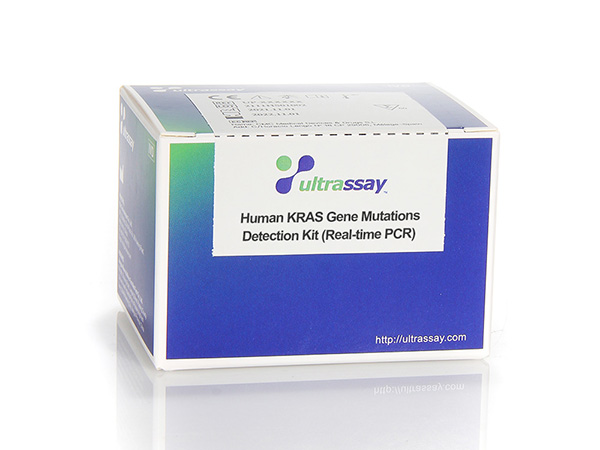Mutations in K-ras are present in 17-25% of human tumors, with a mutation rate of 15-30% in lung cancer patients and 20-50% in colorectal cancer patients (data from Sanger database). Because of the P21 protein encoded by K-ras gene is located downstream of EGFR signaling pathway, the downstream signaling pathway is always activated after k-ras gene mutation and is not affected by upstream targeted drugs on EGFR, resulting in continuous malignant proliferation of cells. Mutations in the K-ras gene generally cause lung cancer patients to develop resistance to EGFR tyrosine kinase inhibitors and colorectal cancer patients to develop resistance to EGFR antibody drugs .2..The clinical practice guidelines for colorectal cancer issued by the National Comprehensive Cancer Network(NCCN) in 2008 pointed out that the mutations that caused K-ras to be activated are mainly codons 12 and 13 in exon 2,and recommended that all patients with advanced metastatic colorectal cancer should undergo K-ras mutation detection before medication ,Therefore, the rapid and accurate detection of K-ras gene mutation is of great significance in clinical medication guidance. This kit uses DNA as test samples to provide qualitative assessment of mutation status, and can assist clinicians to screen out patients with colorectal cancer, lung cancer and other tumors benefiting from targeted drugs. The test results of the kit are for clinical reference only and should not be used as the only basis for individualized treatment of patients, Clinicians should make comprehensive judgments on the test results based on factors such as the patient’s condition, drug indications, treatment response, and other laboratory test indicators.
UltraDx Human KRAS Gene Mutations Detection Kit is used to detect & hotspot mutations in exon 2 of Kras gene on human chromosome 12 using specific blocking technique for wild type sequences and Taqman probes. The Taqman probes are labeled with a reporter fluorophore FAM and a quencher fluorophore BHQ2, respectively. When the probe is intact, the fluorescent signal emitted by the reporter group is absorbed by the quencher group; during PCR amplification, the 5-3 exonuclease activity of Taq enzyme cleaves and degrades the probe, making the reporter fluorophore and the quencher fluorophore separated, so that the fluorescence monitoring system can receive the fluorescence signal. The blocking components contained in the K-ras detection reaction buffer can specifically block the wild type amplification through a specific PCR reaction procedure, while the mutant amplification is not affected; Taqman probe binds to the mutant amplification product to realize the detection of mutations in the sample DNA in real-time PCR platform.
The detection system contains a certain proportion of dUTP, dNTP and uracil-DNA glycosylase (UDG), this enzyme (also known as uracil-N-glycosylase or UNG) can cleave the PCR product containing dUTP, thereby effectively preventing PCR contamination.
The testing area selected by the internal reference reaction solution is the relatively conserved segment of human K-ras gene (about150 bp); as a quality control of the reagents, DNA quality and the operation itself, even if DNA is degraded, the effective DNA amount in the gene can be truly reflected through the internal reference.
Recommended sample types: fresh lesion tissues, frozen pathological section, paraffin-embedded pathological tissue or section.
Applied Biosystems™ Real time PCR system 7500, ABI QuantStudio™5 Real-time PCR system, LightCycler® 480 PCR system, Bio-Rad CFX96 real-time PCR instrument. Ultrassay eQ9600 Real Time qPCR System etc.



